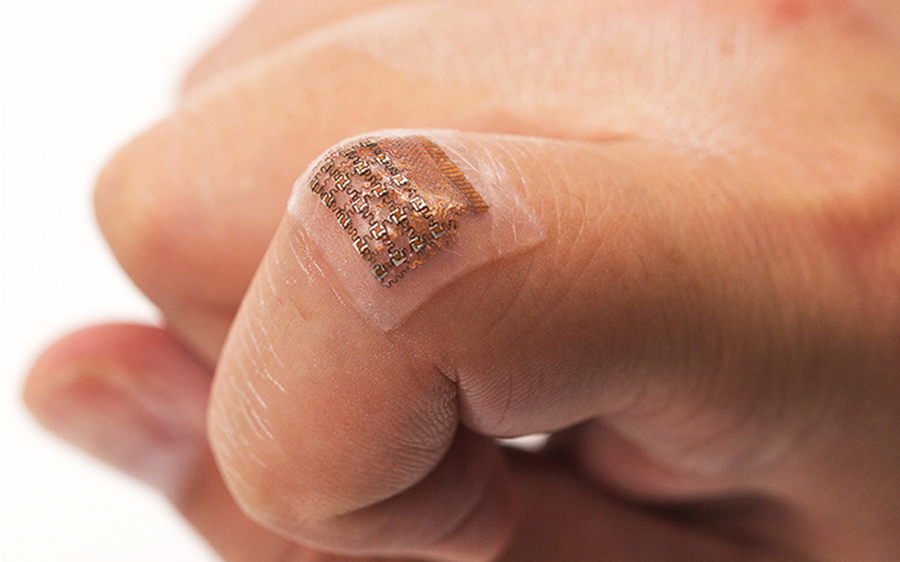Scientists at the University of California San Diego created a new wearable ultrasound patch that non-invasively monitors blood pressure in arteries deep beneath the skin such as the jugular vein and carotid artery. The new patch could be helpful in detecting cardiovascular problems earlier on and with greater precision. In a proof-of-concept study, the patch performed as well as some invasive means to measure central blood pressure.
The new patch uses ultrasound waves to continuously monitor central blood pressure in major arteries as deep as more than an inch below the skin, reports UC San Diego News.
If turned in a product, it may continuously monitor blood pressure changes in patients with heart or lung disease in real-time, as well as patients who are critically ill or undergoing surgeries such as cardiopulmonary procedures in which invasive methods are currently used.
Related Omron Unveils Wrist Blood Pressure Monitor Designed for Obese Patients
“Wearable devices have so far been limited to sensing signals either on the surface of the skin or right beneath it. But this is like seeing just the tip of the iceberg,” said Sheng Xu, a professor of nanoengineering at the UC San Diego Jacobs School of Engineering and the corresponding author of the study. “By integrating ultrasound technology into wearables, we can start to capture a whole lot of other signals, biological events and activities going on way below the surface in a non-invasive manner.”
“We are adding a third dimension to the sensing range of wearable electronics,” said Xu, who is also affiliated with the Center for Wearable Sensors at UC San Diego.

How is The Patch Different than the Traditional Method of Measuring Blood Pressure?
The traditional method of blood pressure measuring device uses an inflatable cuff strapped around the upper arm and measures what’s known as peripheral blood pressure. However, the new ultrasound patch is capable of measuring central blood pressure; it is the pressure in the central blood vessels, which send blood directly from the heart to other major organs throughout the body. Central blood pressure is considered more accurate than peripheral blood pressure and can predict heart disease more accurately.
Currently available method to measure central blood pressure is invasive, and the existing non-invasive method can’t consistently produce accurate readings.
“A major advance of this work is it transforms ultrasound technology into a wearable platform. This is important because now we can start to do continuous, non-invasive monitoring of major blood vessels deep underneath the skin, not just in shallow tissues,” said co-first author Chonghe Wang, a nanoengineering graduate student at UC San Diego.
The patch is still a long way from reaching clinics, according to researchers. Improvements should be done to integrate a power source, data processing units and wireless communication capability into the patch.
The study was published in the journal Nature Biomedical Engineering.












